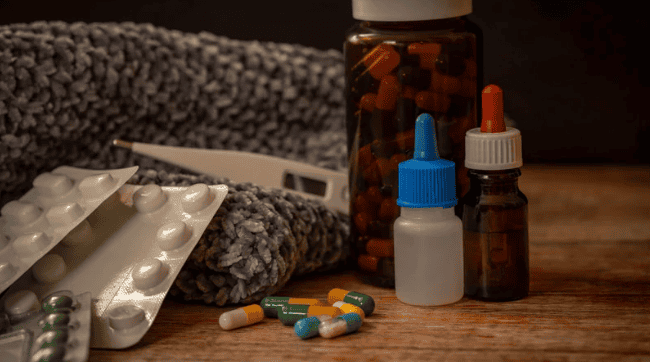
Medication-assisted detox uses FDA-approved medications to safely manage withdrawal symptoms while bridging patients into ongoing treatment for substance use disorders.
Recent evidence shows that buprenorphine initiation via telehealth improves treatment engagement by 29% and reduces overdose risk by 36% compared to in-person approaches.
This guide explains the benefits, risks, and modern approaches to medication-assisted detox to help you make informed decisions about safe withdrawal management.
What is Medication-Assisted Detox?
Medication-assisted detox refers to medically supervised withdrawal management that uses FDA-approved medications to reduce symptoms and complications during the detox process. Unlike traditional “cold turkey” approaches, this method provides pharmacological support to make withdrawal safer and more comfortable.
The primary medications used include buprenorphine, methadone, and naltrexone for opioid withdrawal, plus supportive medications like lofexidine for symptom control. Modern protocols emphasize using detox as a bridge into ongoing medication-assisted treatment rather than pursuing drug-free status as the endpoint.
For opioid use disorders specifically, research consistently shows that detoxification without transition to maintenance medications carries high relapse and overdose risks due to rapid loss of tolerance.
Benefits of Medication-Assisted Detox
Medication-assisted detox offers several important advantages that go beyond easing withdrawal symptoms. Below, we’ll break down the key benefits that make this approach a preferred choice for many.
Reduced Medical Complications
Medication-assisted approaches significantly lower the risk of severe withdrawal complications. For alcohol withdrawal, medications prevent life-threatening seizures and delirium tremens. For opioid withdrawal, medications like buprenorphine eliminate the dangerous cardiovascular stress of unmanaged symptoms.
Improved Treatment Retention
Studies demonstrate that patients who receive medication-assisted detox are more likely to complete the withdrawal process and transition into ongoing treatment. Telehealth-initiated buprenorphine shows particularly strong retention rates, with patients receiving 37% more prescription refills compared to traditional approaches.
Enhanced Safety Profile
Modern medication-assisted detox protocols have transformed safety outcomes. Meta-analyses show mortality rates of 4.3 per 1,000 person-years during buprenorphine treatment versus 9.5 per 1,000 when out of treatment.
Flexible Treatment Options
Today’s medication-assisted detox offers multiple pathways:
- Low-dose initiation: Gradual introduction of buprenorphine while continuing other opioids to minimize precipitated withdrawal
- High-dose emergency protocols: Rapid symptom control in supervised settings
- Transdermal methods: Patch-based approaches that provide steady medication delivery
- Extended-release formulations: Monthly injections that eliminate daily dosing requirements
Potential Drawbacks and Risks
While effective, medication-assisted detox can pose challenges. The following sections highlight the main risks patients and providers should carefully weigh before starting treatment.
Medication Side Effects
All medications used in assisted detox carry potential side effects. Buprenorphine may cause nausea, headache, or constipation. Methadone requires careful dosing to avoid respiratory depression. Lofexidine shows better tolerability than clonidine but can still cause fatigue and dry mouth.
Precipitated Withdrawal Risk
When transitioning from full opioid agonists to buprenorphine, timing is critical. Starting buprenorphine too early can trigger precipitated withdrawal, though recent cohort data suggests this risk is lower than previously feared when modern protocols are followed.
Complex Dosing Requirements
Some medication-assisted detox approaches require splitting sublingual films into small doses or coordinating multiple medications. This complexity can create barriers for patients without adequate support or housing stability.
Insurance and Access Challenges
Despite policy improvements, insurance coverage and provider availability remain inconsistent. Rural areas particularly struggle with access to qualified prescribers and opioid treatment programs.
What to Expect During Treatment?
Understanding the process can make the detox journey less overwhelming. Here’s what patients can typically expect from evaluation and medication planning to daily care.
Initial Assessment
Your treatment team will evaluate your substance use history, medical conditions, psychiatric symptoms, and social circumstances. This assessment determines which medications and protocols best fit your needs.
Special attention goes to identifying xylazine co-exposure, which can complicate opioid withdrawal assessment and requires specific management approaches.
Medication Selection and Initiation
For opioid withdrawal, providers typically choose between several approaches:
- Standard buprenorphine induction: Wait for moderate withdrawal symptoms, then start with 2-4 mg doses
- Micro-induction protocols: Begin with 0.25-0.5 mg doses while continuing other opioids, gradually increasing over 5-7 days
- Methadone programs: Daily supervised dosing with gradual increases based on symptom control
Monitoring and Adjustment
Medical teams track withdrawal severity using standardized scales, monitor vital signs, and adjust medications based on your response. Modern protocols emphasize shared decision-making and harm reduction principles.
Transition Planning
The most critical phase involves planning your transition from detox into ongoing treatment. Evidence strongly supports immediate continuation of medications rather than pursuing drug-free status, as mortality risks spike in the weeks after stopping medication-assisted treatment.

Modern Innovations in Medication-Assisted Detox
Detox methods are rapidly evolving with the help of new research and technology. The sub-sections below explore the latest innovations making treatment safer and more efficient.
Telehealth Integration
Recent policy changes have permanently expanded telehealth options for buprenorphine initiation. Patients can now receive initial prescriptions via audio-only consultations, with prescription monitoring database reviews ensuring safety.
Flexible Methadone Policies
Updated federal regulations allow earlier take-home doses and telehealth consultations at opioid treatment programs. Research shows these flexibilities improve retention without increasing overdose mortality.
Advanced Induction Techniques
New approaches like the transdermal rapid induction method use multiple buprenorphine patches over 48 hours before transitioning to extended-release injections, minimizing withdrawal symptoms throughout the process.
Choosing the Right Approach
Buprenorphine and methadone both play a vital role in medication-assisted detox, but each works differently. Let’s compare how these options measure up in terms of safety, effectiveness, and accessibility.
Buprenorphine vs. Methadone
Both medications dramatically reduce mortality, but they differ in important ways:
| Feature | Buprenorphine | Methadone |
| Setting | Office-based or telehealth | Opioid treatment programs |
| Overdose risk | Lower due to ceiling effect | Higher during initiation |
| Retention rates | Good, especially with telehealth | Superior in fentanyl-dominant areas |
| Access flexibility | High with recent policy changes | Improving with take-home expansions |
Individual Factors
Your treatment team will consider your opioid tolerance, previous treatment experiences, work schedule, transportation access, and personal preferences. Evidence suggests methadone may offer superior retention for patients with high fentanyl tolerance, while buprenorphine provides greater flexibility for those prioritizing office-based care.

Safety Considerations and Risk Management
Safety during detox can’t be overlooked, as improper use increases risk. The details below outline best practices for monitoring, dosing, and risk management.
Overdose Prevention
All patients receive naloxone training and supplies, as tolerance drops rapidly during any period of reduced opioid use. The weeks immediately after detox carry particularly high overdose risk if patients return to previous use levels.
Managing Co-occurring Conditions
Many patients have simultaneous mental health conditions requiring integrated treatment. Comprehensive approaches addressing both substance use and psychiatric symptoms show better outcomes than treating either condition alone.
Addressing Xylazine Complications
The increasing presence of xylazine in the drug supply creates new challenges. Clinical protocols now emphasize recognizing xylazine withdrawal symptoms, which may not respond to opioid medications and require specific alpha-2 agonist treatments.
Long-term Success Factors
Successful detox is about more than short-term relief—it sets the stage for lasting recovery. The following points discuss the key factors that support long-term success.
Continuing Medication Treatment
The strongest predictor of long-term success is remaining on medication-assisted treatment. Research consistently demonstrates that maintenance therapy with methadone, buprenorphine, or naltrexone provides ongoing protection against relapse and overdose.
Comprehensive Support Services
Successful programs combine medication with counseling, peer support, case management, and treatment for co-occurring conditions. Holistic approaches that address social determinants like housing and employment improve retention and outcomes.
Family and Social Integration
Treatment that includes family therapy and community support helps rebuild relationships damaged by substance use while creating accountability structures for ongoing recovery.
Making an Informed Decision
Medication-assisted detox represents an evidence-based approach to safely managing withdrawal while establishing the foundation for long-term recovery. The key is finding a program that offers flexible medication options, comprehensive support services, and a clear pathway into ongoing treatment.
Modern approaches have dramatically improved both safety and effectiveness compared to traditional detox methods. With proper medical supervision and individualized treatment planning, medication-assisted detox can provide the stable foundation needed for sustained recovery.
If you’re considering medication-assisted detox, consult with qualified healthcare providers who can assess your specific needs and recommend the most appropriate treatment approach. Remember that detox is just the first step in a longer journey toward recovery and wellness.Ready to explore your options for safe, medically supervised withdrawal management? Contact Thoroughbred to discuss our detox program and for personalized treatment approaches that prioritize your safety and long-term success.









